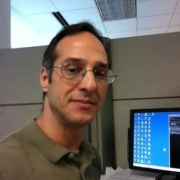


IBM MaaS360 and KACE Systems Management Appliance compete in the endpoint and mobile device management category. IBM MaaS360 is better for mobile device management and security, while KACE excels in integrated asset management and automation for larger IT environments.
Features: IBM MaaS360 provides robust policy enforcement, application deployment, and data protection. It offers secure email, VPN connectivity, and app distribution. KACE focuses on comprehensive asset management, patch deployment, and efficient endpoint management through automation.
Room for Improvement: IBM MaaS360 needs improvements in Android device enrollment and quicker certificate installations. Calls for improved licensing and device compliance handling are noted. KACE requires better scalability, update reliability, and a simplified labeling process, with a need for more intuitive patch management.
Ease of Deployment and Customer Service: IBM MaaS360 is adaptable across public, private, and hybrid clouds, but users report a decline in technical support responsiveness. KACE is primarily used on-premises with generally satisfactory support, albeit slow at times. IBM is preferred for cloud deployment versatility, while KACE is appreciated for its structured on-premises models.
Pricing and ROI: IBM MaaS360's pricing is competitive for its features but can be expensive compared to some alternatives, offering ROI through security and efficiency gains. KACE is considered reasonably priced for larger organizations, offering better value through extensive endpoint management capabilities.
Everything we've gained from it makes my job easier day after day, and I see value in it as an engineer.
Microsoft Intune not only saves costs by reducing the number of personnel needed but also offers a comprehensive solution for managing laptops, applications, security, individual access, and enrollment.
Importantly, when someone leaves the company, it helps protect document access on their devices.
The return on investment is seen in the quick access to information, good inventory management, and efficient systems management.
When a support ticket is submitted, it directly reaches someone with Intune support expertise.
When I contacted Microsoft, they had the same expertise, if not more, which is phenomenal because I felt heard and my problem was solved.
Sometimes, the support provided is excellent, and the representative is knowledgeable, while other times, the service needs improvement.
IBM's support and technical service were helpful when needed.
I would rate the customer support for Quest KACE Systems Management Appliance (SMA) as a 10.
The customer service is very good, providing quick customer support in Spanish.
The scalability of Microsoft Intune is ten out of ten.
Ideally, we want to automatically segregate devices based on user properties like primary use, but currently, dynamic groups seem limited to device properties.
It supports organizations with 200 endpoints and those with more than 15,000 endpoints.
The product is very scalable as it supports 10,000 thousand endpoints with just one appliance.
We have outgrown the size of one KACE appliance and are now running two.
We have not experienced downtime, bugs, or glitches.
It appears Microsoft Intune undergoes changes without informing customers.
Microsoft Intune has been very stable.
Features like unlocking devices sometimes fail, and the support offered for other operating systems is insufficient.
There are communication issues, so you might start working with a feature without knowing if it will be deprecated six months from now.
Many third-party companies offer single-pane-of-glass reporting that shows you what your update environment looks like, how your patch is doing, application status, etc., but Intune's reporting is not intuitive.
Currently, we have to go into each org to deploy applications when we need them all across the university.
The user interface needs improvement as customers have mentioned they do not like the interface since it is not an SMA-based interface.
Introductory professional services, like a fast-track service, were included with our E5 membership, and there have been no additional costs.
The Intune suite and add-ons, such as batch management and remote help, are costly.
It costs approximately forty euros per user per month.
The pricing and licensing experience with IBM MaaS360 was satisfactory and not expensive.
The pricing is in the middle range of the market, not too expensive but not the cheapest either.
My experience with pricing, setup cost, and licensing for Quest KACE Systems Management Appliance (SMA) is that, hands down, it beat all of the others in simplicity and pricing.
Intune excels in configuration and compliance management for Windows 10, ensuring devices receive timely updates and adhere to organizational standards.
Dynamic groups allow us to set conditions for automatic membership, eliminating the need for user intervention or manual review and ensuring a seamless workflow.
Windows Autopatch is the most valuable because it removes the burden of patch management.
The main benefit of IBM MaaS360 is phone control and rollout.
Scripting has saved us hundreds of hours over the years when patching these vulnerabilities compared to how we did it before.
The most valuable features include simplicity, which makes systems management easier and faster, especially for device management.
| Product | Market Share (%) |
|---|---|
| Microsoft Intune | 32.6% |
| IBM MaaS360 | 6.3% |
| KACE Systems Management Appliance (SMA) | 1.9% |
| Other | 59.2% |



| Company Size | Count |
|---|---|
| Small Business | 116 |
| Midsize Enterprise | 46 |
| Large Enterprise | 152 |
| Company Size | Count |
|---|---|
| Small Business | 20 |
| Midsize Enterprise | 7 |
| Large Enterprise | 12 |
| Company Size | Count |
|---|---|
| Small Business | 8 |
| Midsize Enterprise | 20 |
| Large Enterprise | 15 |
Microsoft Intune provides centralized management of mobile devices and applications, ensuring security, compliance, and productivity through integration with Microsoft services like Microsoft 365 and Azure Active Directory.
Organizations use Intune for managing mobile devices and applications, enhancing security and compliance across platforms. With features like single sign-on, conditional access, and zero-touch deployment via Autopilot, it facilitates efficient operations. Intune's scalability, easy enrollment, and capabilities such as remote wipe support diverse device management, offering robust data protection and efficient operation. Despite its features, improvement areas include reporting, compatibility with non-Microsoft devices, and better support for macOS and Linux devices.
What are the key features of Microsoft Intune?
What benefits should users look for in reviews?
In industries such as finance, healthcare, and education, Microsoft Intune is implemented to ensure secure and compliant device management. Companies leverage its capabilities to deploy security policies and manage both corporate-owned and BYOD environments, facilitating a unified approach to data protection and compliance.
IBM MaaS360 is an EMM solution that allows you to configure devices for enterprise access and protect corporate data on smartphones and tablets – all from a single screen. As a robust integrated cloud platform, MaaS360 simplifies mobile device management (MDM) with visibility, rapid deployment, and control that spans across apps, mobile devices, and data. It also secures apps, laptops, smartphones, tablets, wearables, desktops, the Internet of Things (IoT) devices, and data so you can rapidly scale your remote workforce and bring your own device (BYOD) initiatives.
IBM MaaS360 can help you build a zero-trust strategy with modern device management. Deployment is so fast that in just a few clicks, IT admins can start enrolling devices and quickly manage the entire mobile device lifecycle. They can do everything from enrollment to enterprise integration, support, configuration and management, monitoring and security, analytics, and reporting.
IBM MaaS360 Features
IBM MaaS360 has many valuable key features. Some of the most useful ones include:
IBM MaaS360 Benefits
There are many benefits to implementing IBM MaaS360. Some of the biggest advantages the solution offers include:
Reviews from Real Users
MaaS360 stands out among its competitors for a number of reasons. Some of these include its mobile device and laptop management, robust security, and complete sync with Active Directory. PeerSpot users take note of the advantages of these features in their reviews:
Claudia G., a Cybersecurity Consultant at Telefónica, mentions, “My customers value the ability to control all their devices from a central point in IBM MaaS360. I rate IBM MaaS360 a nine out of ten.”
Okoro A.., a CEO at a ITANDT Solutions Limited notes, “The most valuable features are mobile device management and security (which allows you to quarantine infected devices).”
KACE Systems Management Appliance offers integration capabilities, efficient image deployment, and comprehensive asset management. It supports centralized management across diverse devices and locations, simplifying IT processes and enhancing security.
KACE Systems Management Appliance provides single-pane visibility for endpoint management, mass software deployment, automated patch management, robust scripting, and detailed inventory tracking. It streamlines IT management and improves cyber-security compliance through remote software updates and centralized IT request handling. Despite struggles with scalability and the need for interface improvements, it enables efficient device imaging, script automation, and network management through detailed reporting. Organizations find it effective for software deployment, asset management, and endpoint monitoring, serving thousands of IoT devices and desktops.
What are the key features of KACE Systems Management Appliance?In healthcare, KACE Systems Management Appliance is used for maintaining device compliance and security standards. Educational institutions benefit from its capabilities to manage large numbers of endpoints across campuses. In finance, it aids in strict compliance requirements through automated patch management and detailed reporting. Retail sectors leverage its asset management features to streamline operations across numerous locations.
We monitor all Unified Endpoint Management (UEM) reviews to prevent fraudulent reviews and keep review quality high. We do not post reviews by company employees or direct competitors. We validate each review for authenticity via cross-reference with LinkedIn, and personal follow-up with the reviewer when necessary.